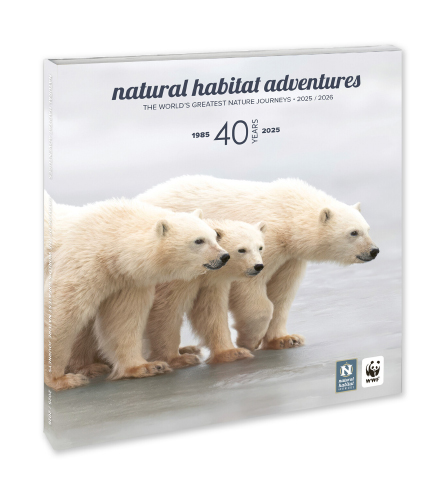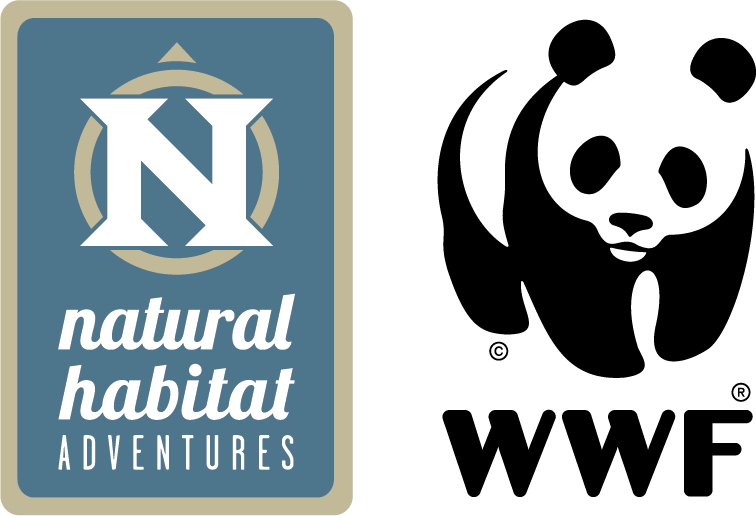By Nat Hab Expedition Leader Kristina Disney
Have you ever been to the places that lie in the corners of maps? Gone to places so little traveled that cartographers cover the region with markers of scale and distance, titles, legends or—better yet—pictures of sea monsters?
Either so little was known about these places that the mapmaker carefully hid their ignorance under their artistic license, or, in the mind of the mapmaker (or rather the dominating culture to which the cartographer belonged), these places were unimportant or easily forgettable.
It’s a good idea to search in the corners; you find forgotten things. In the corners, you find quiet spaces to reflect and old thoughts to ponder. The memories you come across may be your own, or they may belong to another.

Labrador: A Living Laboratory
I can still remember my first flight across Labrador. The chartered float plane took us north from Happy Valley-Goose Bay to our base camp along the coast south of Hopedale. I loved how the shadows of the clouds turned the boreal greens into sapped shades of blue. River channels meandered and braided the land as if the water was in no hurry to go anywhere—as if this was a place where no one was waiting for it.
I can’t remember the name of the river that I called home for the next month, but the plane landed near a spit of land at its mouth, where we unloaded our gear and the resupply for the crew that we would be joining. This wasn’t my first bush job, but it was for the other three who had flown in with me. I could tell they hadn’t spent much time in the woods. Their cotton short-sleeve shirts and denim jeans gave them away. But they were geologists (or at least geologists in the making), and they were about to find out if they would like their chosen career.

The next day, we loaded the resupply into the helicopter, and the pilot flew us even further upriver to the camp that would become our home. This consisted of two 8’x16’ white canvas wall tents on only two patchers of level ground; one was for the kitchen, and one was the ‘office.’ The generators ran the office at night when crew leads needed the satellite Internet to send out the day’s report. The kitchen consisted of a two-burner cook stove, an eclectic set of dishes and pots, several coolers and never enough chairs.
Our personal tents were scattered around the perimeter. I’ll be direct and say that we looked the part of squatters abandoned by civilization in a landscape of solitude.

Timing Life to the Tides
The day we showed up, the food in the coolers wasn’t exactly edible. My welcome to camp was washing out the scent of rotten meat. It was at this time that I learned about tidal rivers. I grew up landlocked, so this was technically my first time living by the ocean, even though the ocean was still a good 10 miles away. Whether for washing or for drinking, our water came from the river.
I remember being amazed the first time cleaning the coolers at high tide; even this far from the coast, the water tasted brackish. The river we were living on functioned as a salt wedge estuary. Because of the difference in density between freshwater and saltwater, the water flowing out from the river is reluctant to mix with the water from the ocean completely. It is lighter, so it floats on top of the seawater. The water from the ocean is denser, so it creeps in along the bottom of the river as far upstream as the river will let it, depending on the counterforce from the streamflow.
The balance struck between inflow and outflow is unique in every river. For ours, when the tide came in, the saltwater overpowered the flow of the river, and the waters mixed more, becoming brackish. When the tide went out, the river had the advantage, and the freshwater maintained its character at the surface, much to our gratitude. This was the first time I learned to time my daily life with the tides.

Assessing the Earth: Is There Value in Valuation?
Getting water, tidying up and packing samples were all chores that needed to be done every day. The real work they had brought us here for was to dig into the Earth. We were an exploration crew meant to assess this land for its mineral value.
All right, I’ll say it: We were there to find gold. The value of a region largely differs depending on where you came from, but for better or worse, gold—and lots of it—can put a place “on the map.” We were there to determine whether this forgotten corner of the world had been overlooked by others in its economic potential.
The desire to measure everything’s potential is, in my opinion, one of the more dangerous behaviors exhibited by humans. We create struggle when we value something for its potential use rather than for what it simply is.
Of course, it’s hard to tell someone to choose the intrinsic value of a place over its economic value without having been there for yourself. I wouldn’t have known to cherish the coastal tundra without having been there.

Bones of the Earth
During that time, our field days were much the same. The helicopter dropped me at some high point; I took 36 samples at standard spacing, crossing through bogs and scrambling bluffs and then got picked up at the next high point or waterbody edge, wherever I could find a clean 50’ radius for the helicopter to land. I won’t tell you about the bugs, but they were worse than whatever you can imagine.
Waiting at the helipad for my ride at the end of a long day was the only time peaceful enough to take in the expanse of where I was.

This place felt old, incredibly old, in a way that made me feel small and fragile and insignificant. I don’t know if my mind took what I knew of geology and created this feeling or if my mind reached out across the landscape and felt that this was the resting place for the bones of the Earth. The four billion-year-old Canadian shield exposed itself as broad sloping granite outcrops undulating across the landscape, like whitecap waves cresting through a sea of spruce trees.
The bedrock truly resembled bone to me, as if giants that had once walked this land, then laid down to sleep only to never wake again. We know they must have gone to sleep long ago, far past time immemorial, because they would have been worshipped as gods if there had been people around to call them such names.
Selfishly, I’m grateful we never found any gold there, that those giants were left in their slumber. I left the industry, as much as I loved how it gave me access to far-off places, to rivers and valleys where so few footsteps have tread.

Finding the Forgotten Corners
I think about my work in Labrador, how this was one of the places that represents the corners of our maps. I think about how we prick them with push pins and carelessly tear them while unrolling the map to get to our center of focus. It’s true that the Canadian shield is not so easily eroded as the paper corners of a map, but the ecosystem that exists upon it is as fragile as it is endless.
I cannot, in good faith, tell another traveler not to go searching in the corners of a map, not to go looking for sleeping giants. Rather, today, I work toward myself and others taking more care with how we travel to places that are so far out of sight and out of mind. I do this as an Expedition Leader for Natural Habitat Adventures, whose ethos of conservation travel protects the planet and supports local communities.
Newfoundland and Labradors’ rugged northern landscapes, profuse wildlife, rich history and cultural heritage combine to create a wealth of surprises—far greater than gold—for adventurers seeking a nature encounter beyond more well-trodden destinations.




























